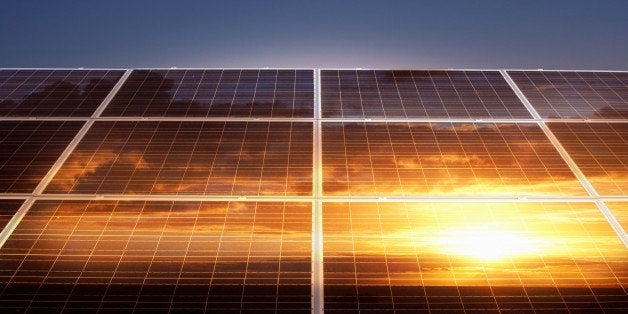
President Obama's June 7 meeting with China's President Xi Jinping is the perfect opportunity to pull the plug on U.S. "anti-dumping" tariffs impacting the import of Chinese solar PV panels. In fact, leading up to that meeting, China has been also voicing its objections over similar tariffs Europe is considering and Obama could play a role in ending that international trade war before it begins.
It was flawed thinking that prompted the president to allow those tariffs. In fact, that flaw permeates through the administration's overall approach to "green energy" in viewing it as a manufacturing base rather than an energy source goal.
Critics say such tariffs only slow the growth of solar energy and increase the time it will take for solar to reach grid parity with traditional fossil fuel sources of electricity.
And trying to gain world domination as a solar panel supplier rather than seeing to our need for sustainable energy independence at home has actually slowed the expansion of solar jobs rather than help since, according to April 2013 stats from the Solar Foundation, nearly half of the 119,000 U.S. solar workers are employed installing PV panels, while only a quarter are employed manufacturing them. The rest do development, sales and marketing. Needless to say, the U.S. tariffs were not good news for solar installers like SolarCity, who's $201 million initial public offering in October 2012 had listed two of its biggest PV panel suppliers as China's Trina Solar and Yingli.
Of course the hypocrisy here is that U.S. companies like Apple, General Motors, Ford Motor, General Electric, Caterpillar, Hewlett-Packard, Siemens, Levi Strauss, and Honeywell can take advantage of "cheap" Chinese labor and still wave the flag of being American made, while PV panels that are "Made in China" by companies traded on the New York Stock Exchange get borderline racist treatment.
Ironically, despite the U.S. tariffs, of the top 10 world PV module suppliers, eight remain from China while only one is from the U.S., according to NPD Solarbuzz.
The complaints against Chinese PV manufacturers to the U.S. Commerce Department were led by SolarWorld -- actually a German company -- under the guise of the Coalition for American Solar Manufacturing (CASM). SolarWorld-led CASM contended that China's government subsidies enabled their solar industry to "price its imports below costs in the U.S. market," arguing that it would result in "corporate bankruptcies, plant shutdowns and industry withdrawals in the West."
Commerce Department's final ruling set anti-dumping tariffs at between 24 percent and 250 percent; in December, commerce also set 50 percent import tariffs for Chinese wind towers.
While CASM says it still has nearly 240 member companies that employ "more than 18,300 American workers," that member list includes none of the major U.S. PV manufacturers or solar trade organizations -- including the Solar Energy Industries Association, which recently stated that "multilateral trade negotiations between the EU, U.S. and China are important to end the dispute" involving Chinese solar panels.
The tariff "dispute" has also caused many U.S. companies to get locked out of China's current domestic solar power build out -- and the expanding Asian market as a whole -- in retaliation.
SolarWorld further joined a complaint to the European Commission claiming China was similarly dumping on the European market. That prompted the European Commission to consider proposed tariffs as high as 68 percent on Chinese PVs and set a June 6 deadline for China to cut a deal before they're implemented.
Unlike the U.S. tariffs, the proposed European tariffs that may be announced this week would only last six months before becoming permanent, allowing wiggle room for negotiations. The permanent decision would come after EU member states vote in December.
But that vote may already be in. The 27 EU member states overwhelmingly voted against the tariffs recently, with 18 members voting no, four voting yes, and five abstaining. And a recent survey revealed 82 percent of the European solar industry is also against such tariffs.
So how has the U.S. solar war on China worked out for SolarWorld so far?
A shareholders' meeting coming July 11 in Bonn, Germany, will allow SolarWorld to explain nearly $50 million in losses not covered by the company's equity and resulting in a 50 percent drop of its capital stock value. And the company continues to lay off workers at its taxpayer-subsidized Oregon plant.
The irony is that SolarWorld is based in Germany, the country that has not only become the world's poster child for turning renewable energy into a viable industry, but is also the most vocal against Europe imposing tariffs on China; something German vice chancellor and economy minister Philipp Rösler labeled as a "grave mistake."
Ending this solar tariff circus between the U.S., China, and now Europe, should be President Obama's first talking point when meeting with China's President Xi Jinping. It's the perfect carrot to begin to establish a more productive trade relationship with China while also boosting the homegrown U.S. solar industry that never supported such tariffs in the first place.
